Horror at Kabul’s gate to freedom
Inside the final deadly moments of the US’ longest-running war
On August 26, 2021, a blast ripped through a crowd outside Kabul airport. More than 180 people were confirmed dead, including 13 American troops.
The Pentagon says all were killed by an ISIS-K bomb.
A CNN investigation raises questions over whether some may have been shot.
Thursday, August 26, 2021
17:36:52 p.m.
The blast ripped through the desperate mass of people outside Kabul airport, turning the sewage canal they’d been standing in red with body parts and blood.
Shogofa Hamidi opened her eyes to find the air thick with smoke, she said. Bodies had fallen on top of each other, and human flesh had splattered onto her face and into her mouth. The travel documents she had been holding had turned to ash.
Around her, people were screaming and wailing. Within minutes, according to Shogofa, the shooting started.
What happened next is part of the untold -- and still disputed -- story of the attack on Abbey Gate.
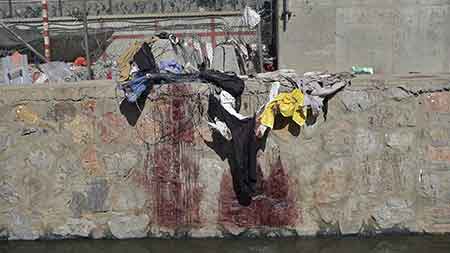

The Pentagon said Friday all 170 Afghans and 13 United States service members who died that day were killed in the blast. A three-and-a-half-month US military investigation involving interviews with 139 people concluded that while US Marines opened fire twice after the blast, none of the bullets hit anyone, according to a detailed media briefing by the investigating team on February 4.
The British military say their troops fired into the air to clear a pressing crowd, but nobody was hit. ISIS-K claimed responsibility for the bombing, which caused the highest US death toll from a single incident in Afghanistan in more than a decade.
But a four-month CNN investigation raises hard questions over what really happened that day -- and how so many people died.
CNN spoke to more than 70 witnesses and families of the dead, reviewed medical records and analyzed video, photos and audio of the scene. Medical staff and administrators at five hospitals that received victims from the attack noted the presence of bullet wounds, and one doctor described removing bullets himself. Hospital statements and patients’ medical records reference bullet wounds. Survivors and families of some of the dead insisted some of the dead and wounded were shot.
Two forensic blast analysts said it was unlikely that so many people could have died in a single person-borne explosion, though other experts told CNN it was possible.
But there are limits to what can be learned. Autopsies are not common in Afghanistan, leaving the medical assessments inconclusive. Video from social media and the military is spotty, and there are gaps in the timeline of events where no footage seems to exist. There are limits to the US military investigation as well. Investigators did not speak to any staff at Afghanistan hospitals or medical staff outside of the US military. Nor did they interview any Afghan civilians.
Still, the information obtained by CNN raises the possibility that gunfire could have played a role in injuries and deaths on that terrible day, despite American and British military denials. This reporting prompts questions about whether the full story has been told about military conduct in the aftermath of the blast.
How it happened
In the days leading up to the blast, Afghans thronged around the perimeter of Kabul airport, clamoring for a flight out of the city.
The Taliban had taken the capital on August 15, plunging the country back into the hands of a repressive regime the US and its allies had fought for almost 20 years to repel.
By August 26, the desperation outside the airport’s walls was at its peak.

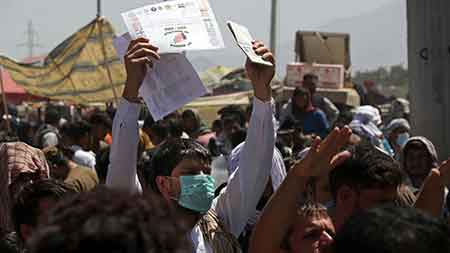
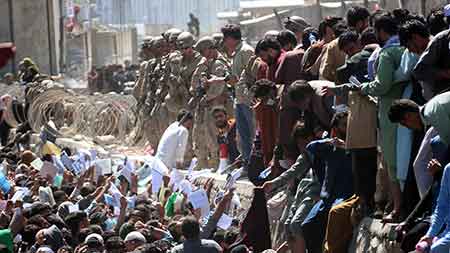
The US soldiers were just five days away from their deadline to leave and the risks were increasing of an ISIS-K attack. The US Embassy in Kabul warned people to stay away from the airport, unless specifically invited by a US representative.
But the crowds came anyway. Some Afghans arrived at the airport clutching visas or passports for other countries. Others held only hope that they would somehow be ushered through the airport gates.

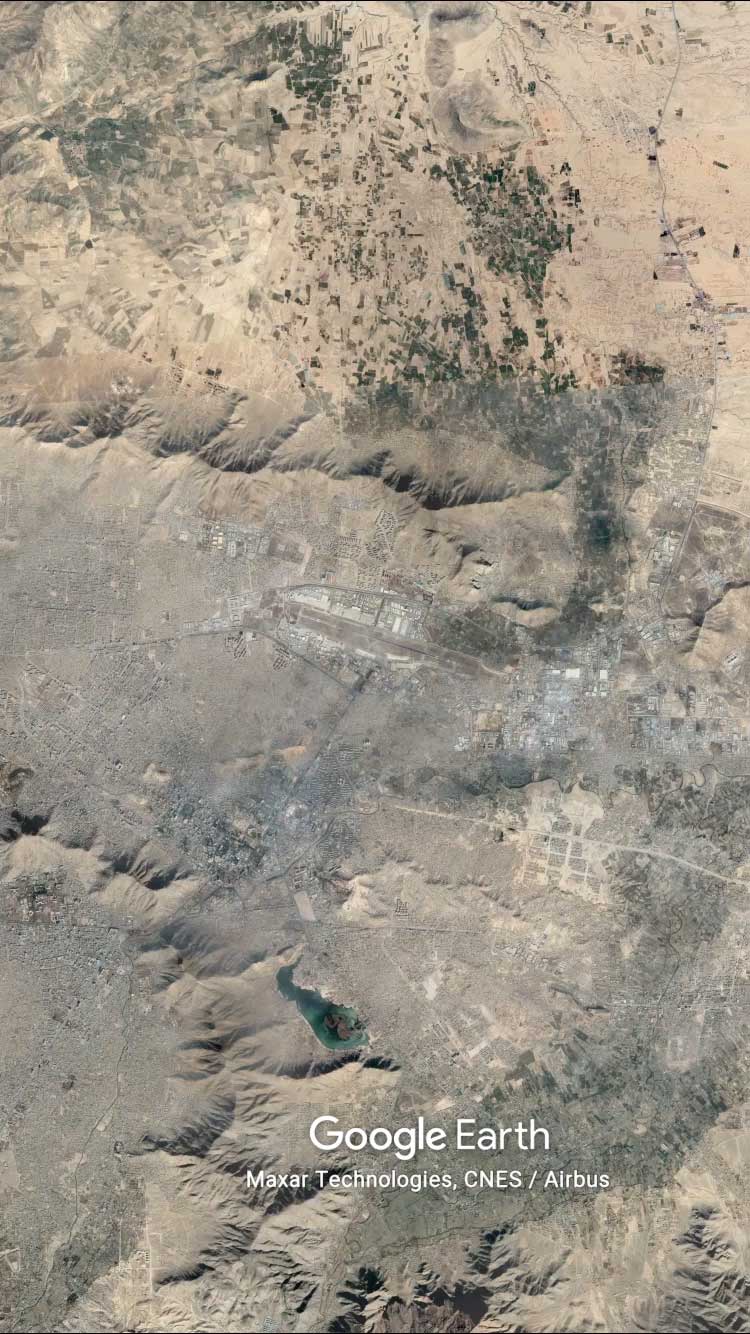





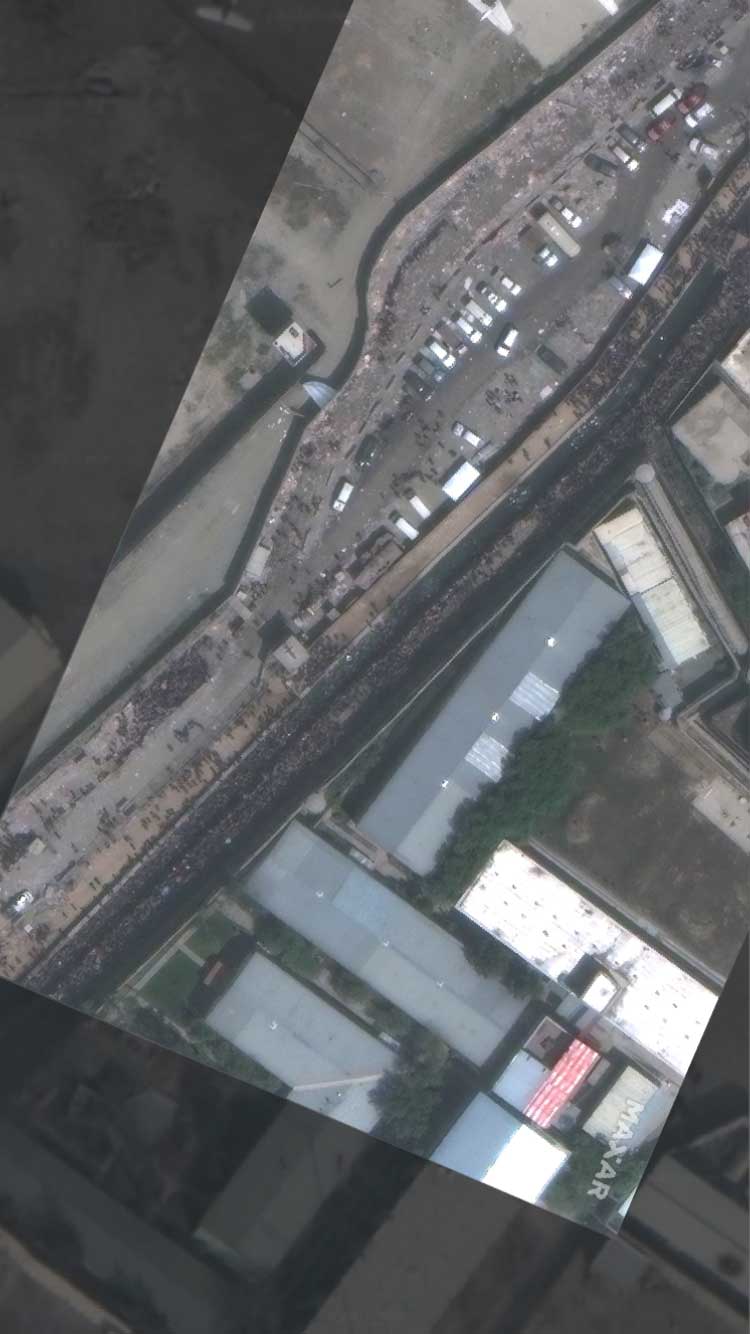
Shogofa and her sister Morsal were among the crowd of people standing in the filthy sewage stream, hoping to show their travel documents to French soldiers. Morsal, then 17, had been accepted to a French university and her sister and parents had been told they could evacuate with her.
Nearby, Ahmad, who does not wish to use his real name for safety reasons, was standing with more than a dozen of his family members, including women and children. Some clutched bags stuffed with clothes and belongings for the journey.
Unlike thousands of others, they had valid travel documents: One was a US citizen, some had green cards, and another obtained a visa after working for the Americans.
Shortly before the blast, most of Ahmad’s family had crossed the sewage canal to the area near where US troops were checking documents. The men were passing up the last of their luggage behind them.
Then the bomb detonated...
“The sky turned red with dust.”
“The canal was filled with blood.”
“There was a mountain of dead bodies.”
“(I saw) pieces of human limbs and clothes flying in the air.”
Some Afghans were killed instantaneously. Others were thrown to the ground. On the airport side of the canal, foreign troops lay dead or injured, according to witnesses. Others were still blocking the gate to the airport as dazed Afghans struggled to their feet.
As Shogofa lay in a pile of bodies, she said she saw soldiers in American uniforms rush to pull their injured comrades to safety. Then Shogofa says she saw troops firing on injured Afghans.
“I saw people who were injured in the explosion trying to get up, but they fired on them,” she said.
Shogofa felt someone pulling on her head. It was her sister Morsal, who was bleeding and moving her mouth as if to call her sister’s name, but was unable to speak.
“There was so much blood coming out of her face, like a faucet running full of blood,” Shogofa said.
“There was no shooting in the air. They were targeting people. It was intentional”Nazir, an eyewitness
Morsal had been hit by shrapnel in the shoulder in the blast but was still able to stand. Shortly after the blast, she said she also saw soldiers firing on those who were standing. Then a bullet struck her jaw and came out the right side of her neck, she said. A medical report from the Italian-run Emergency Surgical Center in Kabul, seen by CNN, confirmed she had been hit by a bullet.
Nineteen witnesses said they either saw people being hit by gunfire or were hit by gunfire themselves. While CNN has not been able to verify each witness account of seeing gunfire, it adds to the pressing questions the US military faces over the incident.
When he came to after the explosion, Ahmad leapt into the canal, where he found his cousin, Mohammad, injured but conscious. He pulled him to the side of the putrid water. As Ahmad tried to help his other relatives, he saw a bullet strike Mohammad’s forehead, killing him instantly.
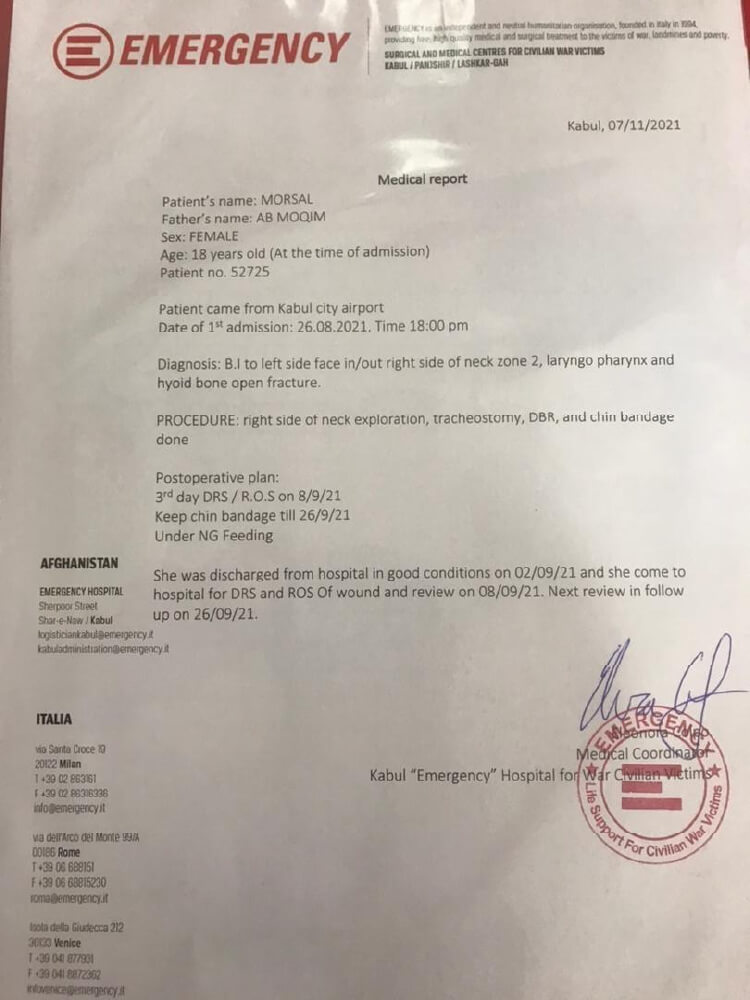

Nazir, 16, who was at the airport with his brother, his brother’s wife and their children, said the shooting seemed to start straight after the explosion.
“There was no shooting in the air. They were targeting people. It was intentional,” he said. “In front of me, people were getting shot at and falling down.”
Another survivor, Noorullah Zakhel, was also standing in the canal when the blast went off. He said he turned to his cousin, Suhail, who appeared uninjured by the blast. “Run,” he said.
Noorullah said he heard shooting as he clambered up the canal wall, so he dropped to the ground and hid among dead bodies. Noorullah noted that the bullets seemed to hit those who tried to flee, so he turned to a family lying next to him and said: “Please don’t run, they will shoot you.”
He recalled soldiers standing in front of him. “They said nothing -- they just shooted people.” The next day, Noorullah’s family told him that Suhail had died after being hit by what appeared to be a bullet.
Who fired shots
The US military confirmed only American and British troops were in the area at the time -- but they say witnesses who claim to have seen people being shot were mistaken.
“The testimony you describe is not inconsistent with the recollections of people with jumbled memories from a concussive event who witnessed trauma and are doing their best to piece together what their brain is unlikely to remember clearly,” said Captain Bill Urban, the spokesman for US Central Command (CENTCOM), the part of the US military overseeing Afghanistan, among other countries. “The testimony of people being shot is not, however, supported by any of the other facts as we know them.”
One of the US investigators, Colonel CJ Douglas, told reporters Friday that US Marines and troops from the United Kingdom did fire after the blast over the canal at two “military-aged males,” but he added that none of the bullets hit their target or any Afghans.
In one incident, Marines “fired four warning shots over the head of an individual who displayed concerning behavior and appeared to be observing the casualty site,” Douglas said. “This individual of interest ultimately fled unharmed,” he added.
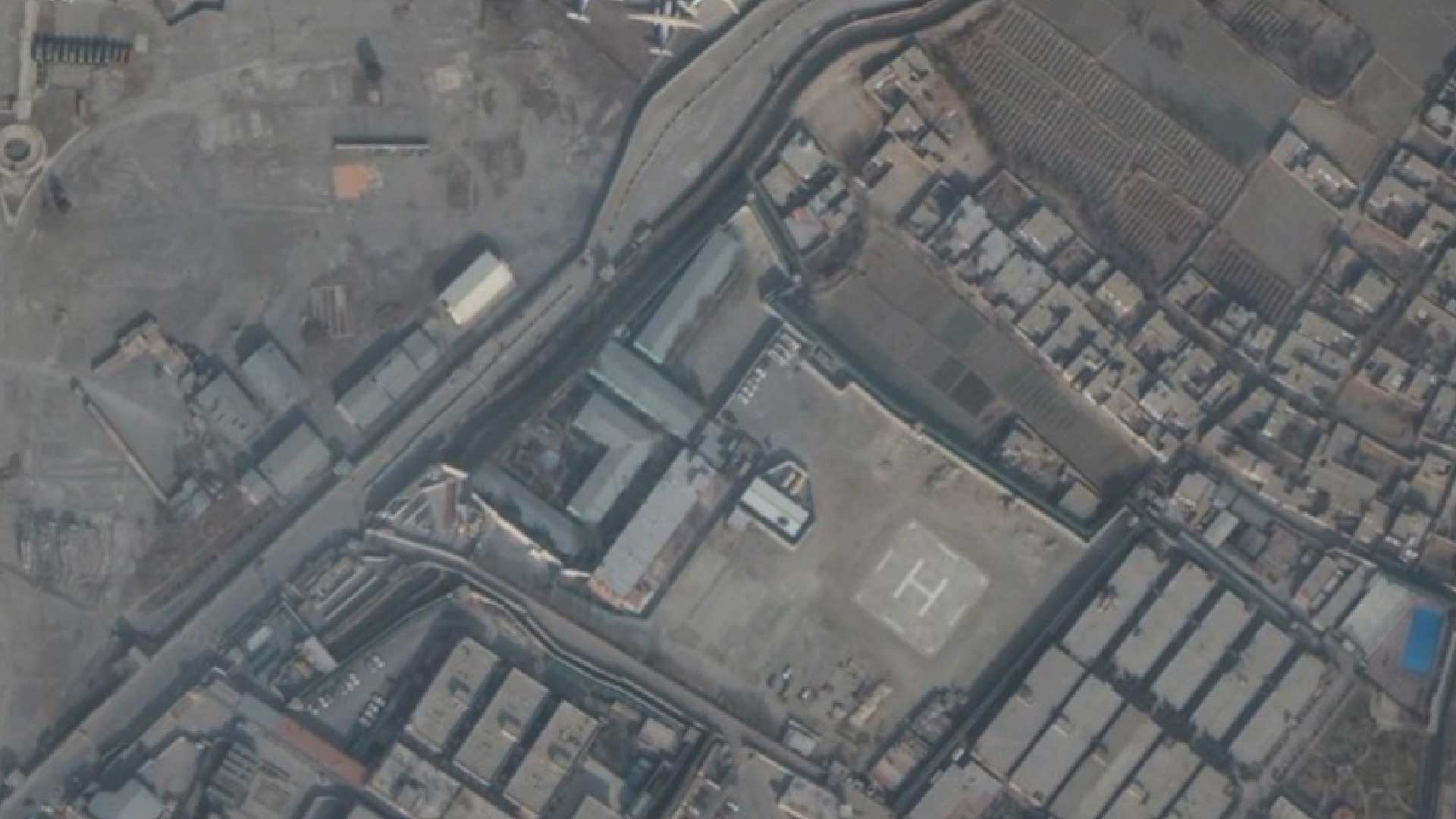

At about the same time, UK troops fired a small number of warning shots into the air from a tower inside a nearby compound called the Zohak Village in the hopes of preventing a “crowd surge,” according to a UK defense spokesperson. These also hit no one, according to the spokesperson. Another US investigator, Brig. Gen. Lance G. Curtis, said Friday the British fired 25 to 35 rounds over the crowd.
In another incident, a unit of Marines just inside the airport’s outer walls opened fire on a man seen holding an AK-47, CENTCOM spokesman Urban said in a separate statement to CNN. It was not clear how many rounds were fired, but it was likely less than a magazine -- 30 rounds -- as it did not require a magazine change, he said. “They did not see if the rounds struck the male, but they did not see him again either,” Urban added.
But a senior military official familiar with the investigation denied anyone was hit by gunfire. “Nothing in the investigation -- we interviewed all these Marines -- led us to conclude that any of that fire struck civilians in any way,” said the official. “All the civilian casualties were attributed to the blast itself.”
“Nothing in the investigation…led us to conclude that any of that fire struck civilians in any way”senior US military official
“There were warning shots fired by both Brits and others that were misconstrued as a complex attack,” the official said, using a term that refers to an attack with more than one weapon type or attacker. He added that if there were civilian casualties from gunfire, US military ethics would mean personnel on the scene would have reported them.
“I don't find it credible,” he said. “Not a single Marine in all our interviews was (saying) ‘Listen, I need to talk to you individually. I saw a war crime.’”
Inside the hospitals
Survivors’ claims that they saw people shot are supported by medical documents and interviews with doctors. In 14 cases, medical reports or statements indicate the patient or victim was hit by gunfire.
Three survivors provided medical reports that confirmed bullet wounds, including one from the US military’s Walter Reed National Military Medical Center in Maryland. That report was provided by a survivor who was evacuated to the US and spoke on condition of anonymity. The report says the person sustained a gunshot wound to the chest, as well as blast injuries. Morsal Hamidi’s report from the Italian-run Emergency Surgical Center in Kabul says she was shot in the face. Another man provided a report that confirmed a bullet injury in his arm.
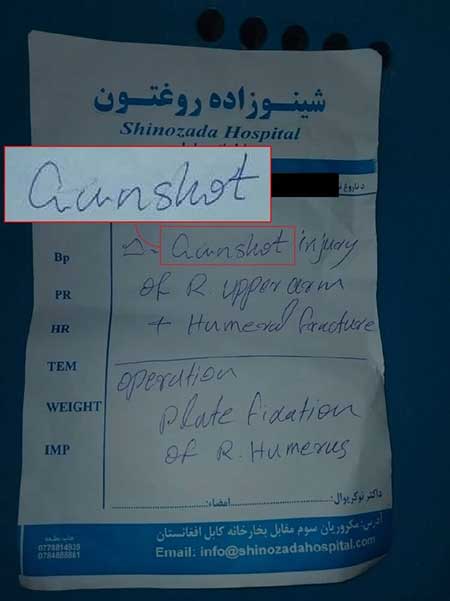
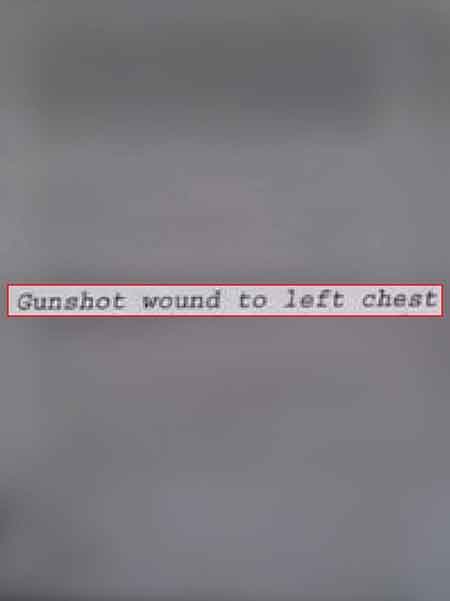
CNN also obtained medical documents and a hospital statement confirming that 11 of the dead had been hit by bullets. Ahmad, who lost three relatives in the blast, showed CNN two separate reports from the Daoud Khan Military Hospital stating that his brother and cousin died “due to gunshot injury and blast injuries” from the airport attack.
The Italian-run Emergency Surgical Center also said in a statement they received nine bodies with gunshot wounds in the hour after the explosion. Seven had apparent gunshot injuries to the head, and two had injures to the chest, a spokesperson said, adding the diagnosis was based on the “appearance of the wounds” and not an X-ray or autopsy.
CNN spoke to medical staff at five Kabul hospitals where patients were treated that night who said some had been hit by bullets, suggesting the total hit by gunfire could be much higher. It was not possible for CNN to access the bodies or assess the methodology of the doctors and hospital staff, and autopsies are rare in Afghanistan. While inconclusive, the pattern of testimony from staff across these separate institutions generates further doubt as to whether more than 180 people were killed by one bomb, as the Pentagon insists.


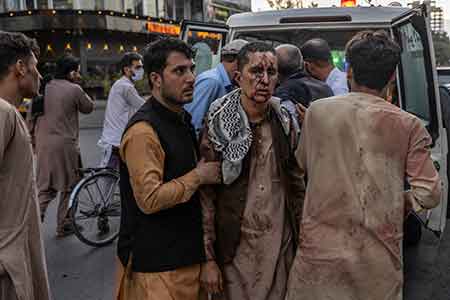
One hospital, Wazir Akbar Khan, received approximately 60 injured people and 145 dead bodies, according to a doctor from the emergency ward who asked not to be named over safety concerns.
The doctor said he had examined the bodies both at night to search for anyone who might be alive among the dead and in the morning to look at the nature of the injuries.
“There was two kinds of injuries,” he said. “People burned from the blast with lots of holes in their bodies. But with the gunshot you can see just one or two holes -- in the mouth, in the head, in the eye, in the chest.
“I removed bullets from four or five injured (people),” he said.
Another doctor at the same hospital’s emergency ward said he searched for his own relatives and any survivors among the bodies. He asked not to be identified for his own safety and said he saw many gunshot wounds.
“I can easily recognize gunshot wounds since we have long dealt with them in the hospital,” the doctor said.
Two other hospitals received a total of seven dead bodies with what doctors assessed as bullet wounds, according to medical sources.
“According to my 15 years of surgery in Afghanistan, bomb and bullet injuries are very different”doctor at Wazir Akbar Khan hospital
CENTCOM spokesman Urban told CNN the medical staff had assessed the injuries incorrectly. US military medical examiners found there was no definitive way to determine objectively and scientifically the cause of death as being from a ball bearing or similar size bullet without a careful study of the internal wounds and finding the projectile that caused it, he said.
“(That was) unlikely to have occurred for a deceased mass casualty victim that arrived (at) a hospital during an ongoing massive trauma event,” Urban said. Investigators asserted there was “a lack of point of injury care, triage, and effective casualty evacuation” for Afghans in Kabul after the blast, he added.
The doctor who removed bullets from patients at Wazir Akbar Khan hospital disagreed and said he was able to determine the different injuries. “According to my 15 years of surgery in Afghanistan, bomb and bullet injuries are very different,” he said. “When a ball bearing enters the body it makes a big hole -- different from a sharp bullet. When a bullet enters, it makes a small hole with a specific border and when it leaves it makes a big hole.”
US investigators accepted Friday they had obtained testimony solely from US and coalition personnel. “During the course of our investigation, we did not have an opportunity to speak with Afghans on the ground,” said one of the investigators, Army Brig. Gen. Curtis.
What the video evidence shows
Despite a large number of security cameras around Kabul airport and many Afghans posting videos on social media from the scene, there is limited footage of gunfire in the aftermath of the August 26 blast.
But some video appears to contrast with the US account.
The video also corroborates some witness testimony, as it shows what appear to be US troops on the airport wall and UK troops on the nearby tower.
The senior military official familiar with the investigation said any rounds were likely fired in the first three minutes after the blast, because no gunfire was apparent on a five-minute video shot by a drone, which started recording three minutes after the blast detonated. “At no point in time throughout this video can you see gunfire,” said the official.
CENTCOM’s Urban added of the drone video: “While this video is not definitive proof that no one was shot during periods of time when the scene was not observed by overhead cameras, they did conclusively demonstrate that the scene of the explosion was not the site of a mass shooting.
“Such an incident would have caused panicked fleeing that continued long after the shooting ended and the likes of which were never observed by any video,” he said.
On Friday, the Pentagon released that drone footage, which the senior military official said was never timestamped. The footage does not provide a stable, constant shot of the bomb’s aftermath, and it does not conclusively support the US assertion that there was no gunfire.
None of the footage obtained by CNN, or the Pentagon, shows US troops firing at civilians. The US official said investigators had not obtained surveillance video of the incident or aftermath.
What the experts say
The senior US military official familiar with the investigation told CNN during a three-and-a-half-hour briefing at the Pentagon in January that everyone who died in the August 26 attack was killed in the blast.
A number of bodies are visible at the start of the US drone footage, though the US official said they had not counted them.
The US official said their experts estimated the size of the bomb to be around 20 pounds (9 kilograms). However, the official noted that their explosives experts had only been able to access the scene 13 hours after the blast. “Their ability to do some forensic collection got really disrupted,” he said. “They did pick up some backpack pieces, things they thought might be part of a vest. None of it came back with any conclusive evidence.” Experts estimated the size of the bomb by comparing it to previous explosions done in tests, he said.
CENTCOM spokesman Urban said in addition to the 13 service members killed, 45 were injured, despite wearing body armor. “The device would have caused catastrophic injuries to the majority of Afghan civilians in the canal,” he said.

The number of casualties attributed to the blast “and the analysis of our experts demonstrated that such a device could reasonably be expected to have killed all of the 160 to 170 Afghan civilians,” he said.
But experts CNN spoke to were divided as to whether the death toll was unusually high for a 20-pound device.
Pete Norton, an experienced bomb scene investigator and former British Army ammunition technical officer with 30 years’ experience, said it was possible that a 20-pound bomb could have caused over 180 deaths near in the Abbey Gate setting, given the conditions at the time.
Other experts say the damage to the walls around Abbey Gate indicate the bomb may not have been that powerful.

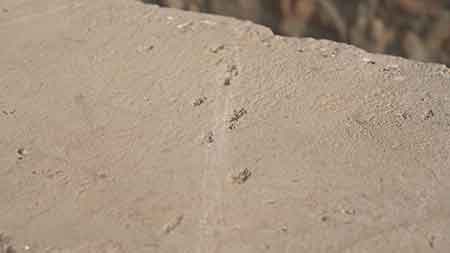

When CNN visited the site in November, the stone walls were marked by what appeared to be pockmarks and blood stains. But there was an absence of significant damage to the walls and infrastructure, suggesting the device may have been smaller than 20 pounds, according to Chris Cobb-Smith, a war crimes investigator and ballistic and blast forensic analyst with 38 years’ military experience. Cobb-Smith, also a former United Nations weapons inspector, was hired by CNN and flown to Kabul to conduct a site survey.
“The number of casualties both dead and wounded is unprecedented for the alleged size of the device utilized in this incident,” he wrote in a statement.
Rachel Lance, an assistant consulting professor at Duke University, who specializes in injury biomechanics and the trauma patterns from blasts, also said the death toll of 180 didn’t align with the size of the bomb. She said the toll was much higher than any other explosion she was aware of from an improvised, person-carried bomb that hadn’t also involved a plane crash or building collapse.
“This death toll is wildly inconsistent compared to all known historical case reports for a bomb that was carried by a single person in an outdoor setting,” said Lance, who based her analysis on images provided by CNN from the scene.
The Pentagon account
The witness accounts, medical reports and expert evidence all raise doubts over the US version of events, which has changed in the months after the blast.
In a press conference on August 27, Maj. Gen. Hank Taylor, deputy director of the joint staff for regional operations, said one suicide bomber was backed by gunmen.
“What we know, there was shooters,” he told reporters. “(We) don't know the exact number, but one with the suicide vest.”
He did not specify where they were located, only saying that the shooters were in an “enemy position” that was “just north of that gate area.”
In an interview published on September 15, the ground commander of the Abbey Gate unit, US Marine Major Ben Sutphen, told CBS News he had been standing 15 feet (4.5 meters) from the blast and witnessed a fellow American Marine get shot in the shoulder. The soldier managed to retrieve his weapon and “puts the opposing gunman down,” Sutphen said.
Following its investigation, the US military concluded that only UK and US troops fired their weapons near Abbey Gate that day, according to the senior military official. The Taliban did not fire at the scene during the aftermath of the blast, and there were no other gunmen present, the official said.
The Pentagon has since assessed that Sutphen’s statements were in error and based on what he had been told by fellow Marines, rather than what he saw, according to the official.
The US official said this, and “a small number of inconsistencies” in other sworn testimony from US personnel, were common in the aftermath of a devastating blast and did not alter their confidence in the narrative provided to investigators by US personnel.
“In general, the investigation did not believe that anyone who testified about an unsupported event was intentionally lying to investigators and attributed the most likely cause of the inconsistency to the concussive blast effect on the individual’s memory,” CENTCOM spokesman Urban added.
Families left behind
For relatives of those killed and wounded, the evidence poses questions that need answers.
On August 26, they hoped to flee the repressive Taliban regime.
Now, months later, many are stranded, in a worse situation than before the takeover.
Some families are still grieving loved ones who were killed. Others are separated by continents.
Ahmad went to the airport to help his family members leave the country. Now his family is torn apart. Some of his relatives who reached the area where the US was processing visas before the blast escaped on flights and received treatment in the US for their injuries. But three of his relatives who tried to flee Afghanistan died in the attempt.

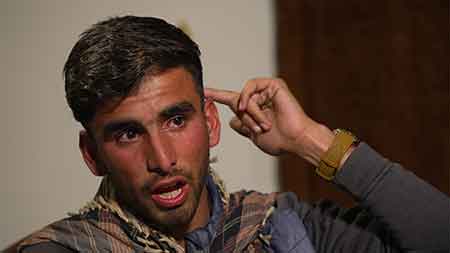
Before the attack, Noorullah wanted to be in the US with his cousin Suhail, working towards a new life. After the blast, he visited Suhail’s grave each day, where he mourned both his cousin and lost dreams. Now he is in Pakistan, where he is being treated for the shrapnel stuck in his head, according to his uncle.
Morsal, who was hit in the jaw, is still recovering from her injuries. She and her family have since managed to escape to France, but the horror of the attack is still with her.
“Every night is like a nightmare for me. I cannot sleep. I just try to remember all my hopes, all my wishes to just live.”